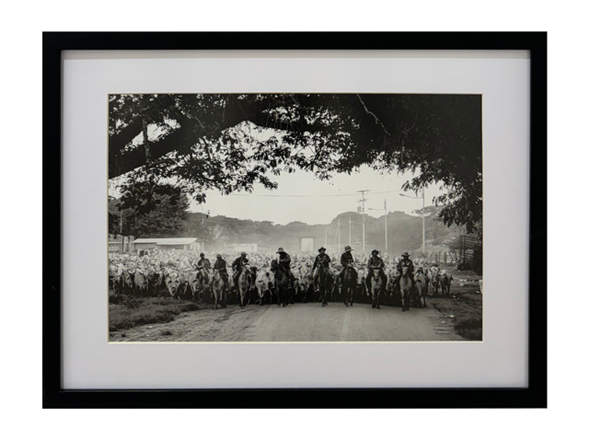You are here
Instituto Cervantes in Amman hosts 'Transhumance' exhibition by Venezuelan artist
By Sophie Constantin - Oct 02,2024 - Last updated at Oct 02,2024

The exhibition encapsulates the essence of a centuries-old tradition, the seasonal migration of livestock, a practice central to Venezuela’s rural heritage (Photo by Sophie Constantin)
AMMAN — The Instituto Cervantes of Amman, in collaboration with the Venezuelan embassy, inaugurated the photography exhibition “Transhumanity: The Meadow in Motion” by Venezuelan artist Hector Varela Casamayor on Tuesday.
Featuring 31 photographs, the exhibition encapsulate the essence of a centuries-old tradition, the seasonal migration of livestock, a practice central to Venezuela’s rural heritage. The exhibition will be on display at the Instituto until December 31.
Transhumance, recognised in 2023 as an Intangible Heritage of Humanity by UNESCO, is at the heart of Casamayor’s artistic exploration.
Yolanda Soler Onis, head of the Instituto Cervantes in Amman, expressed the organisation’s mission of embracing and promoting the diverse cultures of the Spanish-speaking world.
“We represent not only Spain but also every Hispanic country and their rich cultures. The Instituto is their home,” she told The Jordan Times.
A glimpse into Transhumance
Transhumance, an ancient pastoral tradition, involves the seasonal migration of livestock across vast distances in response to seasonal changes.
Every spring and autumn, shepherds, often on horseback and accompanied by their families and dogs, guide thousands of animals between different climatic zones, maintaining a delicate balance between humans, animals, and the environment. This age-old practice, valued for its sustainability, represents a harmonious relationship between nature and human livelihood.
Varela’s photography transports viewers into the heart of Venezuelan plains, where the journey of shepherds unfolds. His images not only document the physical movement of livestock but also capture the deeply personal and emotional bond between shepherds and the land they traverse.
Each photograph invites the audience to engage with the textures, sounds, and sensations of this remarkable tradition, turning the exhibition into an immersive experience.
The artist’s lens
Born in Calabozo, Venezuela, in 1977, Casamayor is a renowned documentary photographer whose work is deeply connected with his Venezuelan roots. His exhibition on Transhumance is an introspective exploration of the pastoral life that has shaped his identity, and has shaped generations of Venezuelan plainsmen, known as “Ilaneros.”
“Through his camera, Casamayor draws the path of the Ilaneros as they lead their cattle and belongings across the plains. His work captures not just the journey but the spirit of a tradition that has defined the cultural landscape of Venezuela,” said Omar Vielma, Venezuelan ambassador to Jordan.
Hispanic cultural hub in Amman
The Instituto Cervantes, founded in 1991, with its headquarters in Madrid, regularly hosts exhibitions, concerts, lectures, and workshops that are open to the public.
“The Amman branch is one of the oldest of the global network, and has been a vibrant cultural hub, fostering a spirit of intercultural dialogue,” Soler told The Jordan Times.

Related Articles
AMMAN — The centrse of Instituto Cervantes in Amman, Beirut, and Cairo have recently held the first workshop of the Translation Programme Po
AMMAN — The Spanish embassy and Instituto Cervantes in Amman are hosting a photo exhibition of works by the renowned Spanish photographer, J
AMMAN — The Spanish embassy, the Instituto Cervantes, the French Institute of Jordan and the Embassy of Belgium have announced that they wil













